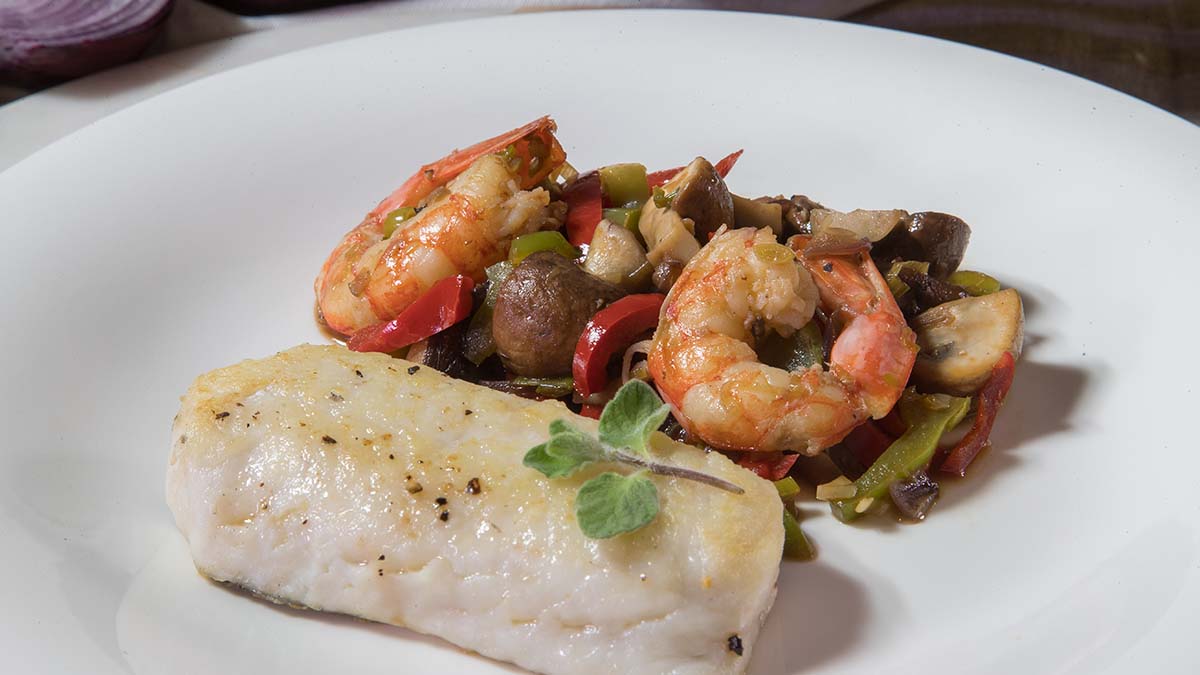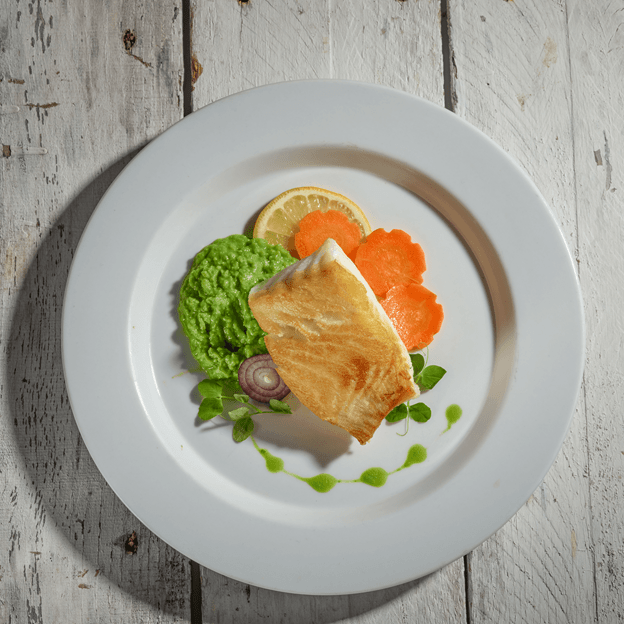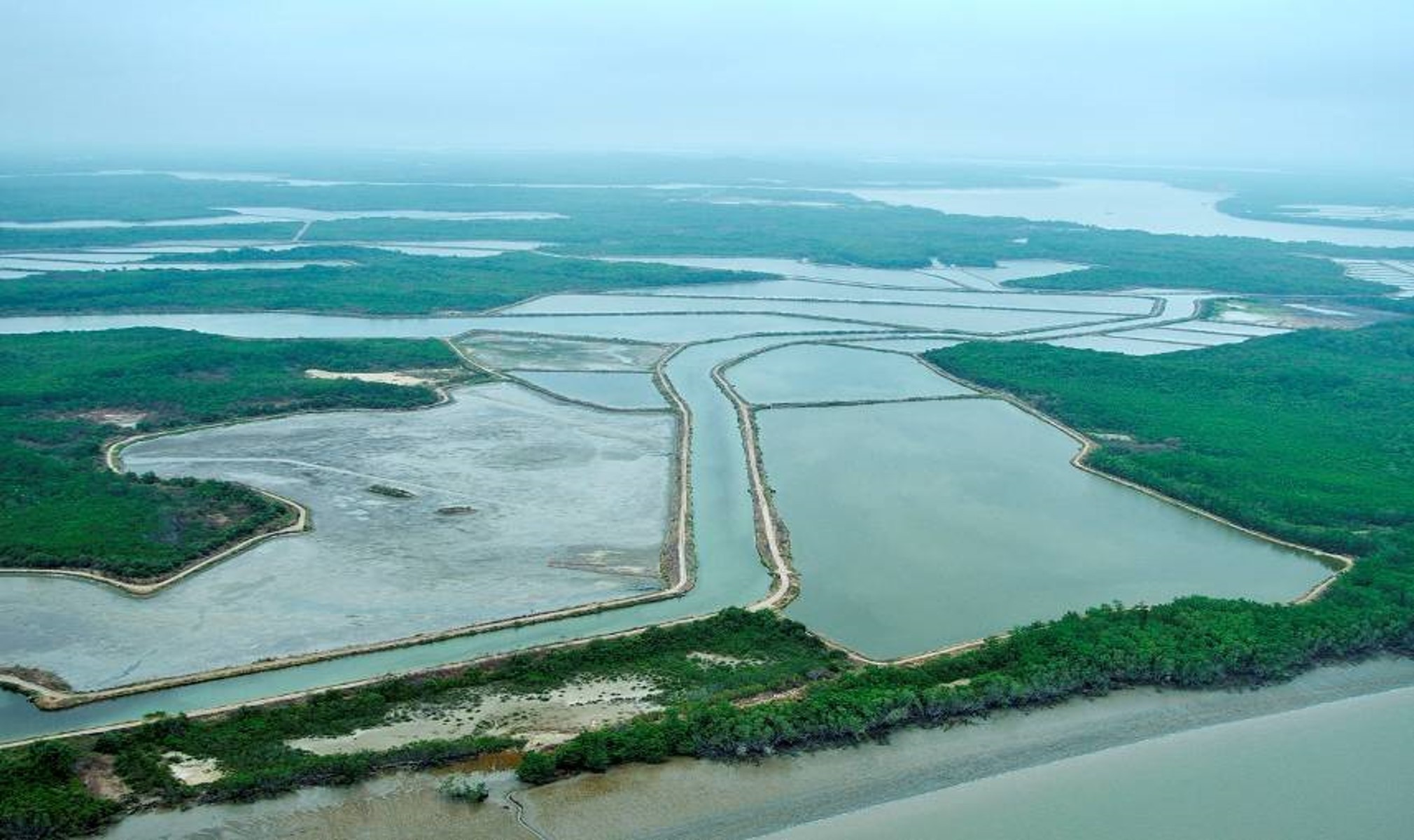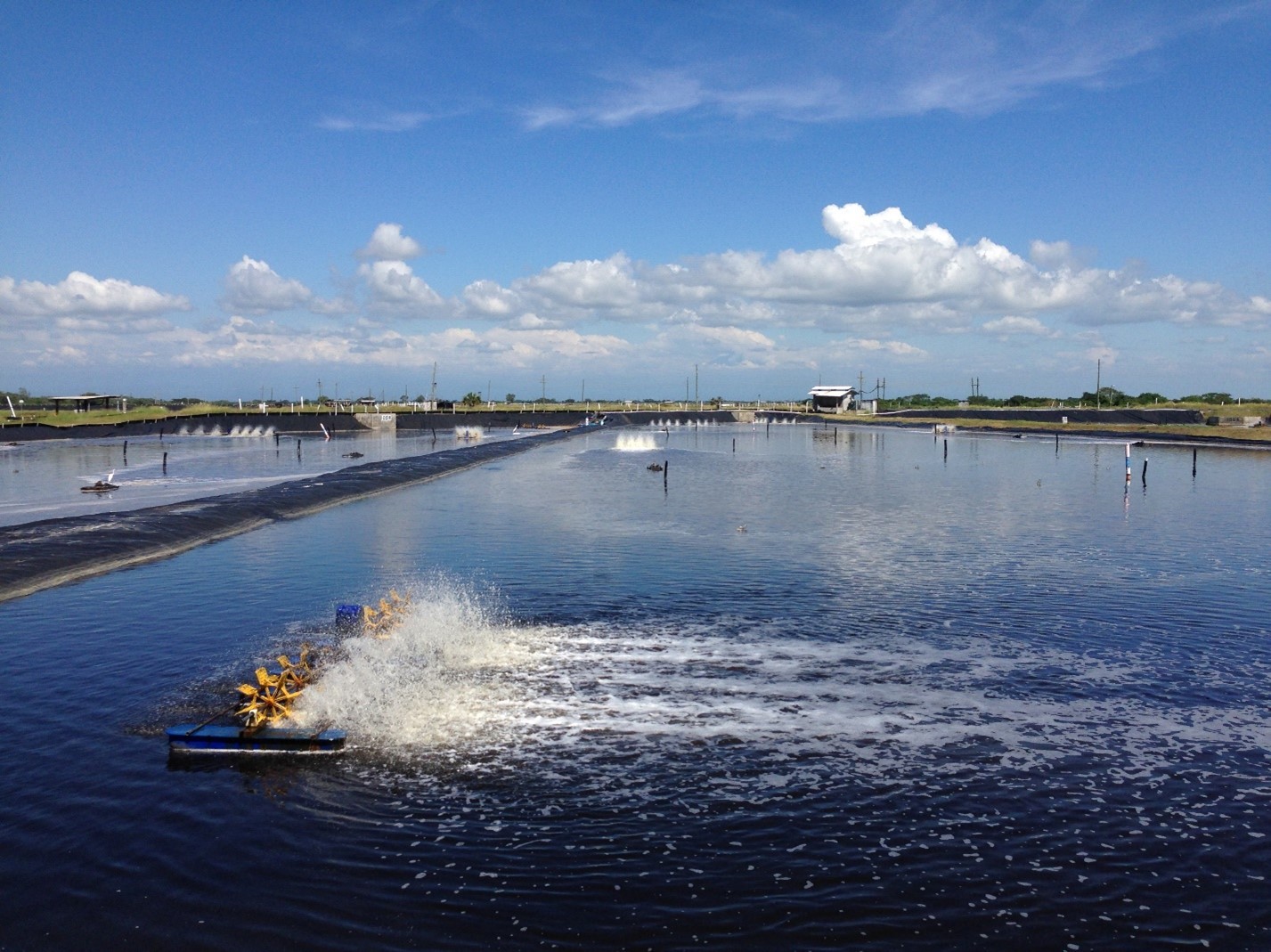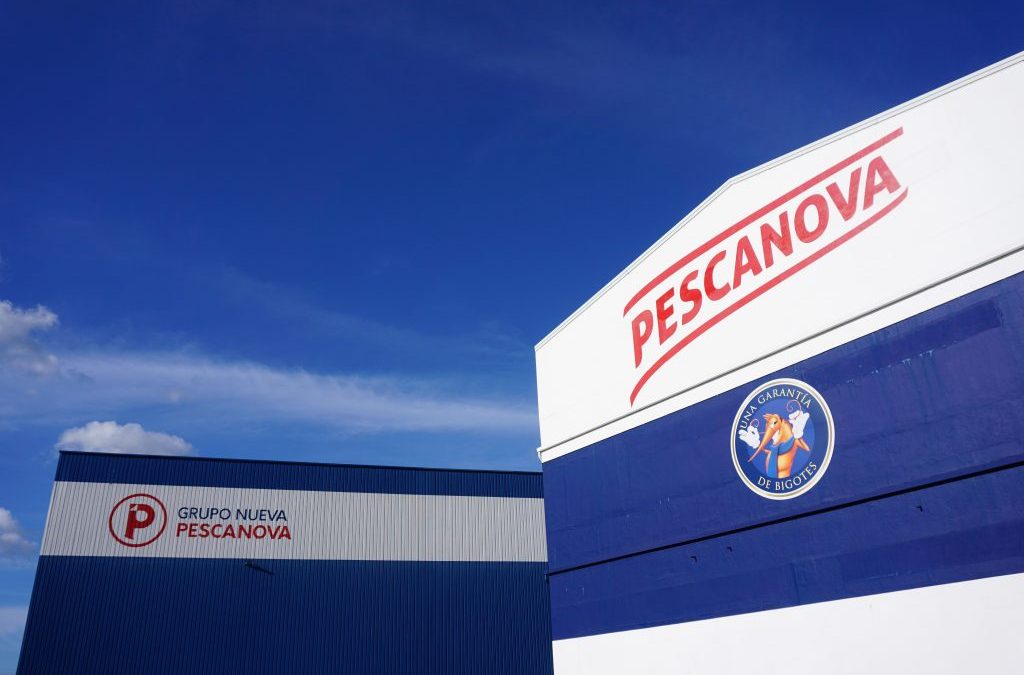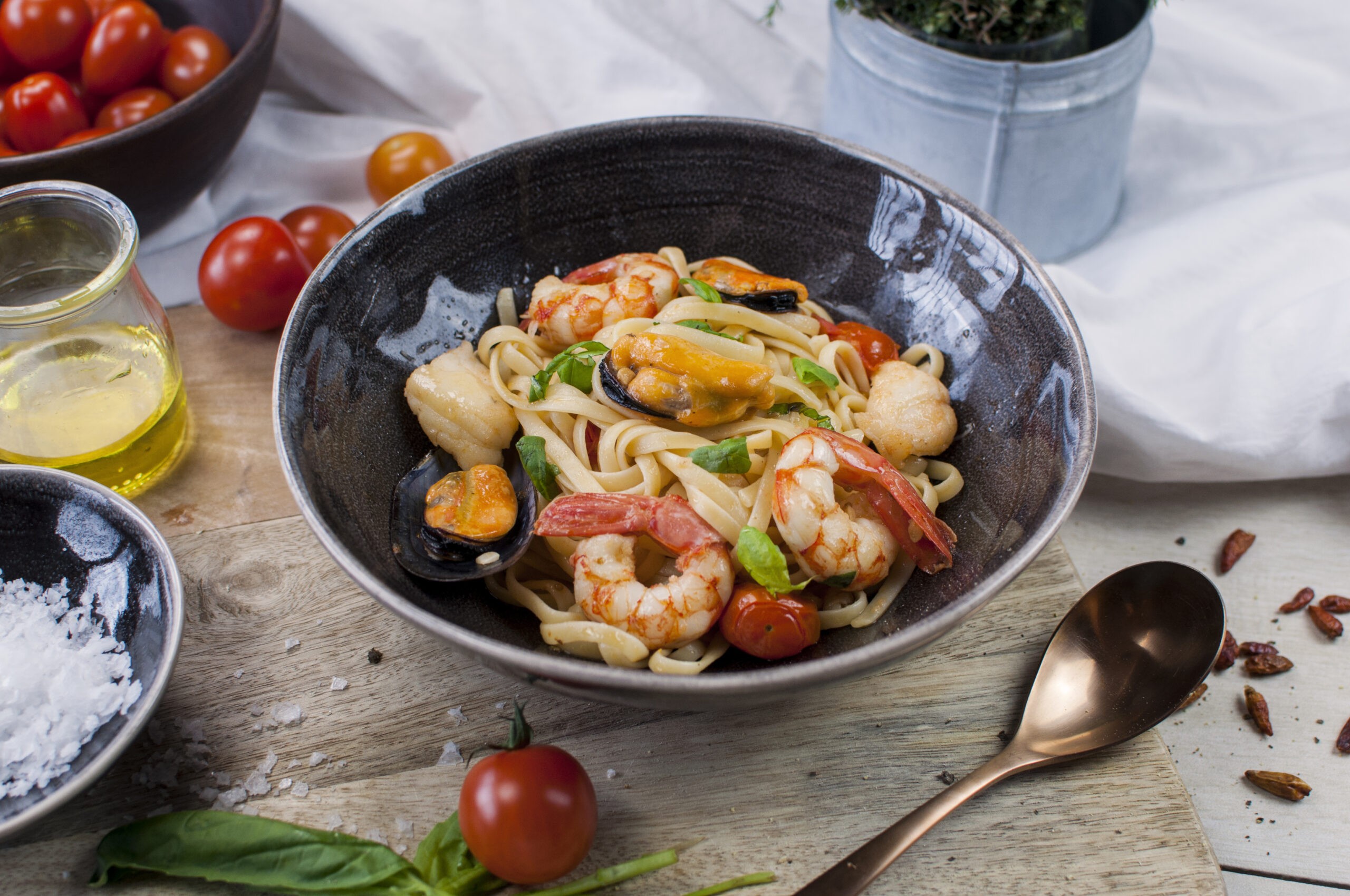Seafood has been long known as a healthy choice of protein that also provides beneficial fatty acids. Unfortunately, almost 90% of Americans do not meet the recommendation for seafood.
Since 1980, the USDA has been evaluating food choices and publishing recommendations for the dietary guidelines of Americans. In its ninth edition, the Dietary Guidelines for Americans 2020-205, includes suggestions through stages of life, from birth to adulthood.
The guidelines state that iron-rich foods, including seafood and meat, should be introduced into an infant’s diet starting at about 6 months old. The importance of iron is to support neurologic development and immune function. Additionally, the essential omega-3 and omega-6 fatty acids found in seafood, nuts, and oils, are necessary for rapid brain development in an infant’s first two years.
Toodlers, ages 12-23 months, should eat 2-3 ounces of seafood per week. Children, ages 2-8, should eat 2-8 ounces of seafood per week. However, seafood and whole grains are two food groups not commonly consumed by youth.
As we age, our seafood intake should increase. Adolescents, ages 9-13, should consume 6-10 ounces of seafood per week. Adolescents from age 14 and adults should ingest 8-10 ounces of seafood per week. This includes 8-12 ounces of seafood per week for women who are pregnant or breastfeeding. Consumption of seafood while pregnant is associated with favorable measures of cognitive development in young children. The iron in seafood and meat is a key nutrient during pregnancy needed to support fetal development. Iron deficiency impacts 1 in 10 women who are pregnant. Chlorine is another key nutrient that can be found in seafood and helps support the growth and development of the baby’s brain and spinal cord.
Seafood provides a variety of key nutrients, including omega-3, omega-6, iron, iodine, and choline. Seafood Is a great while pregnant, but also in your everyday life! Seafood consumption may help promote bone health, decrease the risk of colon and rectal cancers, and decrease the risk of obesity. Eat more seafood!
Sources:
U.S. Department of Agriculture and U.S. Department of Health and Human Services. Dietary Guidelines for Americans, 2020-2025. 9th Edition. December 2020. Available at DietaryGuidelines.gov.
Category: Pescanews
Fish Accompaniments
Fish can be intimidating to cook! However once you start, you’ll quickly learn fish is the perfect canvas for a healthy, protein-packed meal that easily absorbs the flavors and scents surrounding it! Fish pairs swimmingly with garlic, lemon, and herbs. Dill, parsley, thyme, rosemary, and chives are all common couplings. Dress up your fish with even more pizazz by topping it with a pesto or a spicy or fruity sauce! Add pops of color, to the plate with tomatoes, olives, or sprigs of herbs! Plate your fish beside a side of vegetables for an even healthier, colorful finish!
Pescanova and Kimitec Research Collaboration to Improve the Health, Nutrition and Animal Welfare of Aquaculture Species
Article taken from: Nueva Pescanova
● This collaboration will boost research and development of innovative, all-biological solutions, such as probiotics, new foods or products that protect animals from disease, all from a natural and environmentally friendly perspective.
● According to FAO data, already 50% of the seafood consumed in the world originates from aquaculture.
The Nueva Pescanova Group, as part of its commitment to the principles of animal welfare and respect, has reached an agreement with MAAVi, the R&D&I center of Kimitec, a company that develops and innovates natural agricultural products. The aim is to continue making progress in obtaining biological and healthy products that improve the quality of the species and their habitat in aquaculture.
This collaboration will enable both companies (through Kimitec’s MAAVi Innovation Center, Europe’s largest research center focused on natural agriculture and one of the world’s largest natural technology hubs for food systems transformation) to conduct research and develop innovative biological solutions to improve the health, nutrition and animal welfare of aquaculture species.
Among others, they will conduct research into the development of natural probiotics to improve the immune system of animals, generating passive protection. In addition, research will be conducted into the development of new foods for farmed species, developed from the revaluation of by-products, such as parts of fish already caught that are not used for human consumption, or into new natural products to protect animals from possible diseases.
In the words of David Chavarrías, Managing Director of the Pescanova Biomarine Center, the Nueva Pescanova Group’s Aquaculture R&D&I Center: “Our commitment to animal welfare and respect is firm across the entire aquaculture process. Working with Kimitec in the development of healthy products will allow us to improve the welfare of animals and habitats, as well as to advance in research for more sustainable, safer and healthier farming”.
Félix García Moreno, CEO and Founder of Kimitec and MAAVi, adds: “With this agreement, we join Nueva Pescanova’s commitment, which we will help to strengthen thanks to our know-how in biological solutions and technologies built up over 15 years”.
Nueva Pescanova Group’s commitment to aquaculture, as a complementary activity to fisheries, arises with the aim of ensuring the availability of marine resources for future generations, while promoting greater protection of wild fishing grounds. Currently, 50% of the world’s seafood consumption comes from aquaculture, an essential safeguard for the future of marine ecosystems and their sustainability in the face of a growing world population.
What is Aquaculture?
Aquaculture is the cultivation of aquatic organisms in controlled marine and freshwater environments. In other words, it’s environmentally responsible farming of fish and shellfish. Freshwater aquaculture typically occurs in manmade channel systems or ponds, whereas marine aquaculture primarily occurs in net pens in the ocean or in tanks on land.
While traditional practices of fishing have been used for thousands of years, there’s simply not enough supply of seafood in the oceans and rivers for the ever-growing demand of consumers for that to remain the only method. Using aquaculture as a source for seafood is not only crucial for meeting consumer demands but it also ensures the seafood is raised in a healthy habitat with improved nutrition. Another benefit is that aquaculture is the perfect habitat to rebuild endangered species, which can save them from extinction.
Overall, the breeding and harvesting of seafood in an aquaculture environment produces the seafood needed to feed the world’s population without causing damage to the environment.
Pescanova doubles its EBITDA
Article taken from: Nueva Pescanova
•The company increased its sales, in its last 12-month financial year, ended in March 2022, by 21.4%, the sales figure was even 4.4% higher than in the pre-pandemic year of 2019.
•It has doubled its EBITDA, which reached €80M compared to €39.5M in the previous year.
•The Group obtained a positive net result of €7M, €31M more than in the previous year.
The Board of Directors of the Nueva Pescanova Group, the Spanish multinational group of companies leader in fishing, aquaculture, processing and sale of seafood products, will bring to the ordinary general meeting, to be held next June 15, the approval of the annual accounts for the last 12 months reporting period, ended March 31, 2022.
The Group’s turnover totaled €1.087Bn, a 21.4% increase year-on-year, and a 4.4% rise if compared to the pre-COVID financial year of 2019. Among other, the increase in sales of Vannamei shrimp and cephalopods stands out.
Analyzing by channel, Nueva Pescanova ups pre-pandemic levels in both Retail and Wholesale and Organized Food Service. In addition, its sales have increased in all destinations, especially relevant are the results in countries such as Portugal, France, Greece and the USA.
On the other hand, the Nueva Pescanova Group has doubled its EBITDA, reaching €80M, after the €39.5M€ gained in the previous year. The Nueva Pescanova Group’s profitability has improved substantially, with an EBITDA/sales ratio of 7.4% up from 4.4%, thanks, mainly, to an improved efficiency of the aquaculture and fishing operations, control of global costs and better commercial margins. The net profit of the Group was €7M, €31M higher than the previous year.
Among the most notable milestones in the year, in May 2021, the Group registered a program for the issuance of promissory notes in the Alternative Fixed Income Market (MARF) for up to €50M.
INVESTMENTS, INNOVATION AND SUSTAINABILITY
Among other, it stands out the investments in Aquaculture 4.0 in the vannamei shrimp facilities in Nicaragua and Ecuador, where 100% of the farming area (6,500 ha) has been fitted with automatic feeders and sensors, thanks to the company’s alliances with companies such as Microsoft, IBM, Repsol or Nokia, which are based on the incorporation of Artificial Intelligence and Big Data into the rearing processes.
In November 2021, the Group opened the Pescanova Biomarine Center, the largest R&D&I center for Aquaculture in Europe engaged in improving the rearing of species, carrying our studies in the field of nutrition, management, health and genetics, as well as the rearing of new farmed species, like the octopus.
In the last financial year, the Nueva Pescanova Group developed a total of 57 innovation products worldwide in the different categories (natural fish, cephalopods, shellfish, surimi and ready to cook products). On this subject it stands out the launch of a new product “La Pasta del Mar”, innovation for which it has received numerous awards, such as the Global Seafood Marketplace, the Carrefour Innovation Award and the Product of the Year, among other.
On the other hand, its commitment to the sustainability of the planet in accordance with the SDGs of the 2030 Agenda, it was once again been recognized as the first fishing company worldwide that contributes most to the achievement of a sustainable industry, according to the 2021 Seafood Stewardship Index ranking of the World Benchmarking Alliance. And it is so, because the Group carried out in this year a total of 1,296 responsible actions in the 19 countries where it operates.
Seafood Facts
Whether you need new trivia questions or you just want to learn about our favorite species, we have a bunch of fun seafood facts for you!
Do you know the top three consumed seafoods in the US? Shrimp, Salmon, and then Tuna. Americans eat over 4 pounds per capita of Shrimp per year.
Argentine Red Shrimp:
- Argentine Red Shrimp have a short reproduction cycle, fully reproducing in 12-16 months, which has enabled a natural sustainability for harvesting.
- The global market for Argentine Red Shrimp has been steadily increasing over the last 10 years.
Vannamei Shrimp:
- Vannamei is the leading farm-raised shrimp species in the Western hemisphere.
- Its wide salt-tolerance range and a rapid growth making it ideal for aquaculture climates.
- White shrimp are carnivorous, feeding on krill, sandworms, mollusks, oysters, and anchovies.
Branzino or Mediterranean Sea Bass:
- Branzino is native to the Mediterranean sea, though they can also be found throughout shallow coastal waters and river mouths as they travel south for the winter into warmer waters.
- They are a night-hunter that feeds on small fish, crustaceans, and fish eggs.
- Mediterranean Sea Bass can grow up to 3 pounds, though it averages 1-2 lbs.
Chilean Sea Bass:
- The Patagonian toothfish was renamed “Chilean Sea Bass” in the 1970s to make it more appealing to customers.
- Chilean sea bass are a long-lived fish not maturing until 10 years of age and possessing a life span of 50 years.
- These fish typically weigh 10-20lbs, though adult toothfish can reach up to 7.5 feet in length and up to 220lbs!
Mahi Mahi:
- The words “Mahi Mahi” translate to “very strong.”
- Mahi Mahi are also called the dolphin fish because they have a large, blunt dolphin-shaped head, and they often swim ahead of ships, like dolphins.
- The dolphin fish is an extremely fast swimmer than can reach speeds of up to 60 mph.
- Mahi-Mahi are a fast-growing, short-lived species reaching maturity within the first year.
- The spawning season for these fish occur 2-3 times a year.
Spanish Octopus:
- An Octopus has no bones.
- They have three hearts: two move blood past the gills while the third keeps circulation flowing to the organs.
- An Octopus has copper-based blood which is more efficient at transporting oxygen and colors their blood blue.
- Their ink causes irritation to predators’ eyes as well as interferes with their sense of taste and smell.
- Octopus arms can react on their own without the brain telling them to becasue 2/3 of its neurons reside in its arms.
Salmon:
- Salmon is known as the “King of Fish.”
- Atlantic salmon are unique in that they’re anadromous, or able to survive in both fresh water and salt water.
- These fish have an amazing sense of smell.
- The Latin root of salmon, means “to leap.”
- Salmon only reproduce once in their lifetime.
Silverside:
- Silverside is a small fish that doesn’t grow more than five inches in length.
- They have a short life-span, only living about 2 years at the maximum.
- Silverside congregate in schools in brackish waters or near sandy, grassy shorelines, where they lay their eggs.
- These fish were named for the wide, silvery stripe on each side of their body.
